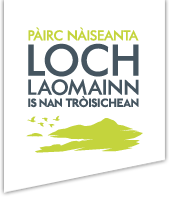
What are Core Paths?
Core Paths should be the most important paths (of any width or surface) within the path network which provides the public with reasonable access throughout the National Park.
They can be paths that communities require to carry out daily journeys from home to school or work, or paths which allow both residents and visitors to fully explore the National Park, such as the West Highland Way. Other paths exist and complete the path network; however the Core Path network should form that core system of paths that provide a reasonable level of provision.
Core Paths are largely centred around towns and villages where people live or places people visit. They can also connect path networks both in and outside the National Park.

Core paths can help connect pathways both in and out of the National Park
A path having core path status brings no additional duties for the National Park Authority however it does provide additional powers to do anything considered appropriate to maintain the path, keep it free from obstruction or encroachment, and provide the public with directions through signage and promotion.
The current network of Core Paths consists of 732km of cycle tracks, hill paths, historic routes, pavements, forest tracks, short sections of quiet minor roads and off-road paths in towns, villages and wider countryside of the National Park.
Search our digital map for more information on the existing Core Paths network or order a hard copy.

